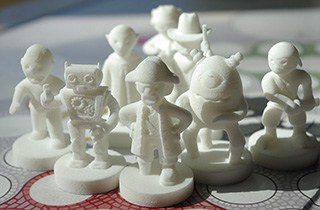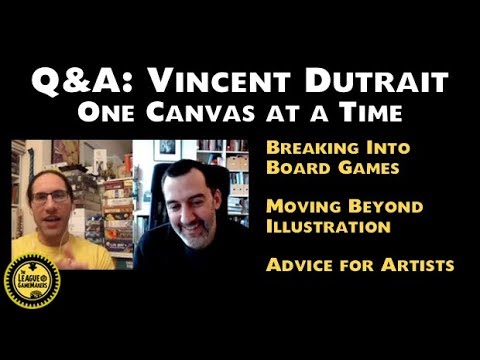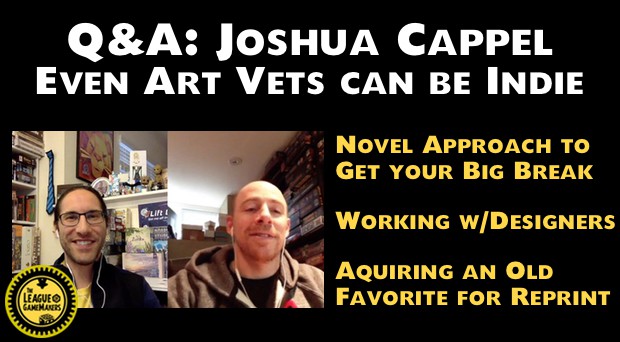It’s okay to create a game that’s just for you or your friends. But when thinking about sharing it with a wider audience (whether that’s approaching publishers or launching it yourself on Kickstarter), one very important question to ask yourself is:
AM I DESIGNING AN IDEA OR A PRODUCT?
Any project likely starts with designing an idea. Maybe you want to challenge yourself to use a particular mechanic. Maybe you want to explore a system. Perhaps you’ve got a compelling theme and narrative you want to build an experience around.
Designing an idea is about a platonic ideal. You are trying to reach things like “Deck Builder” or “RPG” as a concept more so than as a function. You may be able to produce a prototype, but you’re not concerned with the practicality of it. Ideas are abstracted systems that do not have to conform to anything except self-imposed, theory-based constraints.
EXPLORING AND PLAYTESTING YOUR IDEAS
Any idea is worth playtesting early and often, especially if you’re not sure if it works yet. When you’re at this stage, your components, mechanics, number of players, number of rounds, and all the values that go into your game are all in flux. You are just performing exercises to see what kind of experience you get from following certain steps.
Beacon was an asteroid mining card game idea I worked on in the spring, where I explored a mechanic that gave all players a benefit when you played a card, and you tried to build up your own mining ships while not giving your opponents too many advantages.
![]() However, the experience was flawed and the idea fell apart. Actions were repetitive and predictable, no matter how I tweaked the values. So the idea went on the shelf, and may be tossed back in the toolbin for later repurposing. That’s normal.
However, the experience was flawed and the idea fell apart. Actions were repetitive and predictable, no matter how I tweaked the values. So the idea went on the shelf, and may be tossed back in the toolbin for later repurposing. That’s normal.
But as you can see from the picture, I was not sure if the idea was working, so I wasn’t concerned about graphic design or components or any practical constraints other than what worked on paper. Don’t worry about the bigger picture stuff until you’re ready to make your idea into a product.
WHEN AN IDEA GRADUATES TO A PRODUCT
At some point, things will start clicking into place with an idea. It’ll begin to show promise and create an experience that you want to share with other people. As soon as you have that desire, you need to think about how to make it a product, because this point will happen long before the game is ready to self-publish or pitch to publishers.
Designing a strong product requires an understanding of every process that goes into creating the end result. The earlier in your design that you start thinking about what it would take to turn your game into a real product, the more pitfalls you’ll avoid in its development. These constraints are:
- Physical – What can be made. For example, researching the process of injection molded pieces might help you avoid creating a game where the figures aren’t going to break.
- Practical – What is affordable to make. For example, researching the cost of creating custom dice might help you avoid creating a game that needs 30 different dice molds.
- Marketability – What has an approachable audience at this time. For example, researching the way the collectible card game distribution model works might help you avoid sinking countless hours into designing a collectible game with no established market base.
- Reachability – What’s understandable/intuitive/appealing to your target player base. For example, researching how games are translated in international markets might help you create iconography and concepts that are easy to translate.
But I’m just the game designer! Doesn’t the publisher figure out how to make my design into a product?
Even if you don’t want to handle all the logistics, just learning about those processes is important to making informed design decisions. If you design with clear understanding of physical, practical, and market constraints, you are more appealing to publishers. Then, when the time comes to bring in artists, graphic designers, manufacturers, marketing people and so on, they will be able to do their jobs far easier and far better.
For example, you might not think to join a Kickstarter discussion community because you’re going to be pitching to a publisher. But what if that publisher uses crowdfunding to produce their games? Having a basic understanding of how Kickstarter works (even if you don’t get into deep conversations about it) will help you design your game around that funding model.
 It was important to me to understand the process of miniatures, so I 3D printed miniature versions of my soon to be Kickstarted game, Zerpang! By doing so, I was able to show physical items to people who understand the injection mold process and get pointers as to how I might need to adjust these for actual production.
It was important to me to understand the process of miniatures, so I 3D printed miniature versions of my soon to be Kickstarted game, Zerpang! By doing so, I was able to show physical items to people who understand the injection mold process and get pointers as to how I might need to adjust these for actual production.
DO NOT DENY YOURSELF THE OPPORTUNITY TO LEARN EVERYTHING YOU CAN ABOUT THE PROCESS.
Design is the communication of an experience. If the experience you craft is never communicated to its audience because it is impractical to produce, it is an empty design.
Seek out communities where you can feel free to ask questions about the WHOLE process instead of just tunnel-visioning on bits and pieces:
- Blogs like this one are great because our contributors are designers, publishers, and artists who can answer these questions. But don’t just stop with us. Seek out other experienced designers and publishers to get a broader perspective. Stonemaier Games, James Mathe, and Hyperbole Games all have blogs with a lot of useful information to absorb.
- The Game Crafter has a good gathering of people who can make suggestions based on the component library and production process of that site. There are also other online communities where you can find good information, like the Board Game Designers Forum.
- Show your game to a publisher or printer and ask “what are the production issues you see in my game?” and write down their feedback. (Do be respectful of their time, though!)
- Connect with people in the industry with social media, particularly Twitter, and pay attention to what they have to say about their own experiences.
It’ll take time to learn all the ins and outs of producing games. Be patient, listen to everything. The more information you have, the stronger your game design foundation will be.








